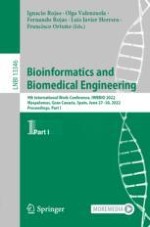2022 | OriginalPaper | Chapter
COVID-19 Severity Classification Using a Hierarchical Classification Deep Learning Model
Authors : Sergio Ortiz, Juan Carlos Morales, Fernando Rojas, Olga Valenzuela, Luis Javier Herrera, Ignacio Rojas
Published in: Bioinformatics and Biomedical Engineering
Publisher: Springer International Publishing
Activate our intelligent search to find suitable subject content or patents.
Select sections of text to find matching patents with Artificial Intelligence. powered by
Select sections of text to find additional relevant content using AI-assisted search. powered by
